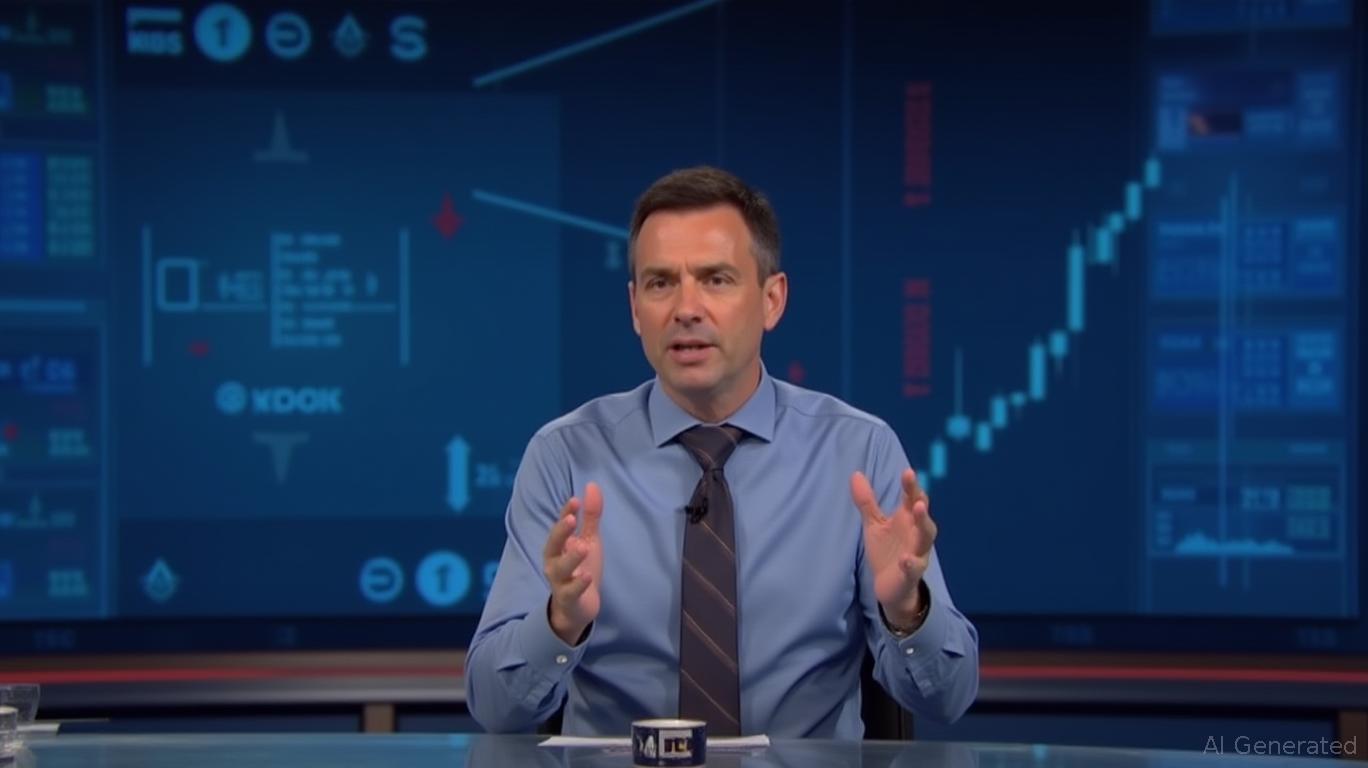Analyzing Consumer Credit Trends: Indicators for Economic Health and Investment Strategy
Monday, Feb 17, 2025 8:00 pm ET
Introduction
Understanding consumer credit trends can offer valuable insights into the broader economic landscape and influence investment strategies. As investors, examining these trends helps in anticipating economic shifts and making informed decisions about where to allocate resources. This article will explore consumer credit trends, how they can be used to gauge economic health, and the strategies investors can employ based on this information.
Core Concept Explanation
Consumer credit refers to the amount of credit used by consumers to purchase goods and services. It includes credit cards, personal loans, and other forms of borrowing. The growth or shrinkage of consumer credit can signal changes in consumer confidence and spending habits, which are crucial indicators of economic health.
Consumer credit is typically categorized into two types: revolving credit, such as credit cards, which allows consumers to borrow up to a certain limit repeatedly, and non-revolving credit, such as student loans and auto loans, which are fixed amounts paid over time. Monitoring these categories helps investors understand consumer behavior and predict economic trends.
Application and Strategies
In practical terms, when consumer credit is growing, it often indicates that consumers feel confident about their financial situation and are more willing to spend. This can lead to increased revenues for businesses, particularly in the retail and service sectors, potentially boosting stock prices in these industries. Conversely, a decline in consumer credit might signal reduced consumer spending, indicating economic slowdown.
Investors can use consumer credit data to adjust their portfolios. For instance, in an environment of rising consumer credit, investors might consider increasing their stakes in consumer discretionary stocks, which typically benefit from higher consumer spending. On the other hand, if consumer credit is declining, shifting towards more stable sectors like utilities or consumer staples might mitigate risks associated with economic downturns.
Case Study Analysis
A notable example of consumer credit trends impacting the stock market occurred during the 2008 financial crisis. Prior to the crisis, there was a significant increase in consumer credit, particularly in the mortgage sector, driven by subprime lending. As defaults on these loans increased, consumer confidence plummeted, leading to a sharp decline in credit usage and consumer spending. This had a cascading effect on the stock market, with many companies experiencing significant losses.
More recently, during the COVID-19 pandemic, consumer credit saw fluctuations as economic uncertainty affected spending habits. Initially, credit usage dropped as consumers cut back on spending, but as economic recovery efforts took hold, consumer credit began to rise again. This trend was mirrored by recovery in the stock markets, particularly in sectors like technology and e-commerce, which benefited from increased online spending.
Risks and Considerations
While consumer credit trends can provide useful insights, they come with inherent risks. A rise in consumer credit might lead to over-borrowing, increasing the risk of defaults if economic conditions worsen. Investors should be cautious, ensuring that their strategies are backed by comprehensive research and understanding of the broader economic context.
To mitigate these risks, it's essential to incorporate a diversified investment strategy. This means not relying solely on consumer credit trends but considering other economic indicators and maintaining a balanced portfolio that can withstand market volatility.
Conclusion
Consumer credit trends serve as a critical barometer of economic health, offering investors valuable information to guide their strategies. By understanding these trends and their implications, investors can make more informed decisions, positioning themselves to capitalize on economic upswings and protect against downturns. As always, thorough research and a robust risk management strategy are vital to navigating the complexities of the financial markets.
Understanding consumer credit trends can offer valuable insights into the broader economic landscape and influence investment strategies. As investors, examining these trends helps in anticipating economic shifts and making informed decisions about where to allocate resources. This article will explore consumer credit trends, how they can be used to gauge economic health, and the strategies investors can employ based on this information.
Core Concept Explanation
Consumer credit refers to the amount of credit used by consumers to purchase goods and services. It includes credit cards, personal loans, and other forms of borrowing. The growth or shrinkage of consumer credit can signal changes in consumer confidence and spending habits, which are crucial indicators of economic health.
Consumer credit is typically categorized into two types: revolving credit, such as credit cards, which allows consumers to borrow up to a certain limit repeatedly, and non-revolving credit, such as student loans and auto loans, which are fixed amounts paid over time. Monitoring these categories helps investors understand consumer behavior and predict economic trends.
Application and Strategies
In practical terms, when consumer credit is growing, it often indicates that consumers feel confident about their financial situation and are more willing to spend. This can lead to increased revenues for businesses, particularly in the retail and service sectors, potentially boosting stock prices in these industries. Conversely, a decline in consumer credit might signal reduced consumer spending, indicating economic slowdown.
Investors can use consumer credit data to adjust their portfolios. For instance, in an environment of rising consumer credit, investors might consider increasing their stakes in consumer discretionary stocks, which typically benefit from higher consumer spending. On the other hand, if consumer credit is declining, shifting towards more stable sectors like utilities or consumer staples might mitigate risks associated with economic downturns.
Case Study Analysis
A notable example of consumer credit trends impacting the stock market occurred during the 2008 financial crisis. Prior to the crisis, there was a significant increase in consumer credit, particularly in the mortgage sector, driven by subprime lending. As defaults on these loans increased, consumer confidence plummeted, leading to a sharp decline in credit usage and consumer spending. This had a cascading effect on the stock market, with many companies experiencing significant losses.
More recently, during the COVID-19 pandemic, consumer credit saw fluctuations as economic uncertainty affected spending habits. Initially, credit usage dropped as consumers cut back on spending, but as economic recovery efforts took hold, consumer credit began to rise again. This trend was mirrored by recovery in the stock markets, particularly in sectors like technology and e-commerce, which benefited from increased online spending.
Risks and Considerations
While consumer credit trends can provide useful insights, they come with inherent risks. A rise in consumer credit might lead to over-borrowing, increasing the risk of defaults if economic conditions worsen. Investors should be cautious, ensuring that their strategies are backed by comprehensive research and understanding of the broader economic context.
To mitigate these risks, it's essential to incorporate a diversified investment strategy. This means not relying solely on consumer credit trends but considering other economic indicators and maintaining a balanced portfolio that can withstand market volatility.
Conclusion
Consumer credit trends serve as a critical barometer of economic health, offering investors valuable information to guide their strategies. By understanding these trends and their implications, investors can make more informed decisions, positioning themselves to capitalize on economic upswings and protect against downturns. As always, thorough research and a robust risk management strategy are vital to navigating the complexities of the financial markets.










